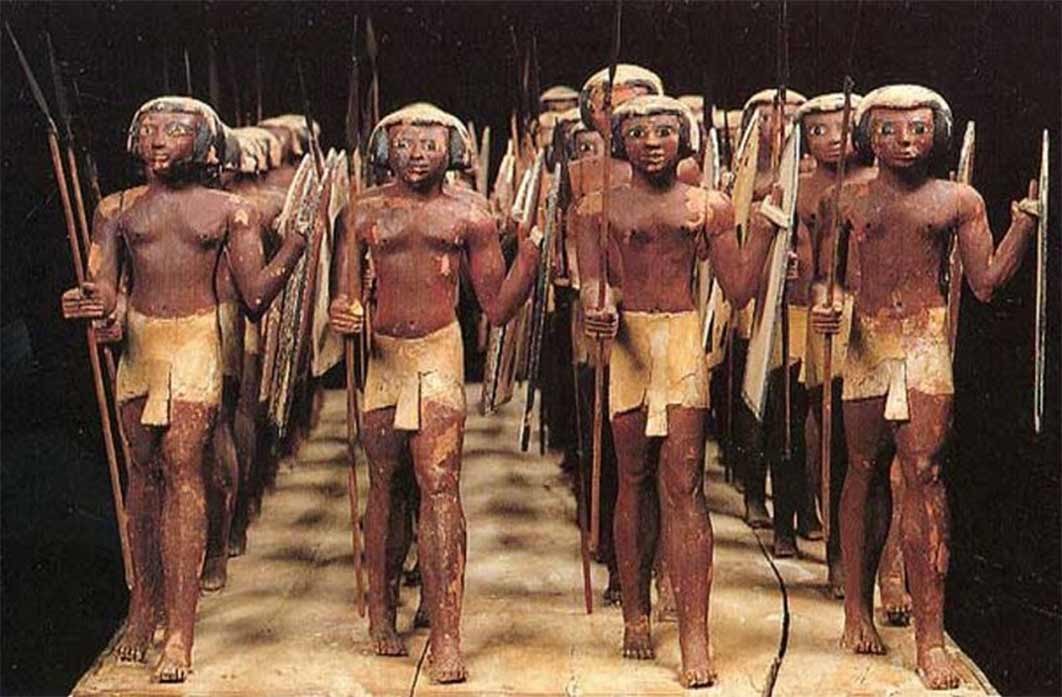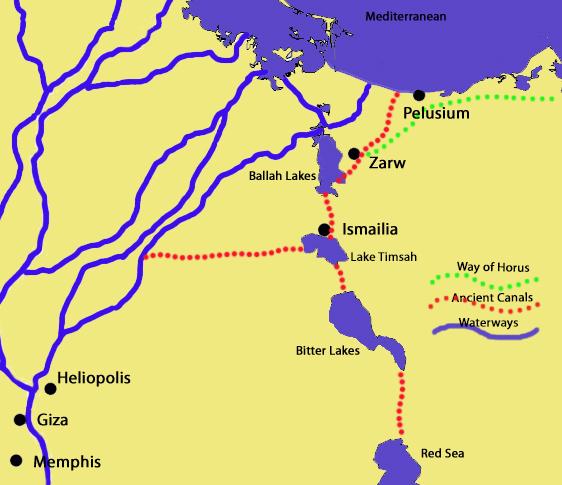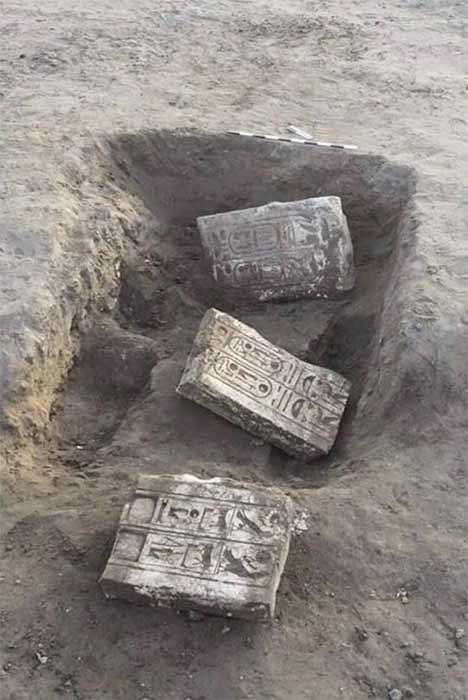
Defensive Fortress Zarw, Along The Way Of Horus In Ancient Egypt
The rich fertile lands of Egypt’s Nile Delta must have been looked on with avaricious eyes from their next-door neighbors to the east. All that lush greenery lay in stark contrast to the deserts of the Sinai and beyond. The Northern Sinai coastline was the land bridge that joined Egypt and the rest of Africa with the Middle East and beyond into Asia. The natural gateway to all that Egypt had to offer. With no real natural barriers, the need for solid defensive structures on the eastern approaches to the Delta was crucial. Here lies the Way of Horus, the Wall of the Ruler/Prince, and the fortress of Zarw. This need for defense was understood as far back as the early Fifth Dynasty, as shown by the title ‘Overseer of the Way of Horus’ found in the tomb of Hekni-Khnwm, discovered just to the south of the causeway between the Cult Temple and the Valley Temple at Giza.

The Eastern Frontier showing the Way Of Horus (green), from Zarw (Image: Courtesy Ted Loukes)
The Way Of Horus
The Way of Horus is the ancient military road that leads from the eastern Delta, following the old Mediterranean coastline, to somewhere near the current Israeli border. It is believed to be the same route as the Way of the Philistines mentioned in Exodus in The Bible. The pyramid texts of the Sixth Dynasty King Teti also mention the Way of Horus. It turns up again in the First Intermediate Period in the Instruction to Merikare, a series of policy decisions made supposedly from an aging king to his heir: “For the mooring-post is staked in the district I made in the East from Hebenu to Horusway”.

A raised-relief depiction of Amenemhat I accompanied by deities; the death of Amenemhat I is reported by his son Senusret I in the Story of Sinuhe. (John Campana/ CC BY-SA 2.0)
The 12th Dynasty Tale of Sinuhe follows the adventures of a court official, Sinuhe, who, upon hearing of the death of King Amenemhat I, flees Egypt for Upper Retenu and only returns to his homeland as an old man. Although considered by many as a work of fiction, the story draws on real geographical locations and mentions both the Wall of the Ruler as well as the Way of Horus. On his journey east: “I gave a road to my feet northward and attained the Wall of the Prince, which was made to repel the Setiu and to crush the Sandfarers. I bowed me down in a thicket through fear lest the watcher on the wall for the day might see.” The return journey relates how: “Came this humble servant southward and halted at Paths-of-Horus. The commander who was there, in charge of the frontier-patrol sent a message to the Residence to bear tidings. And His Majesty sent a trusty head-fowler of the Palace, having with him ships laden with presents of the Royal bounty for the Setiu that were come with me to conduct me to Paths-of-Horus.”
Large limestone fragments of the ancient gate at Tjaru/ Zarw Fortress, Egypt. (Credit: Egypt Antiquities Ministry photo)
The Fortress Of Zarw
According to the Prophesy of Neferti, it was possibly the same Amenemhat, first king of the 12th Dynasty, who began the construction of the Wall(s) of the Ruler/Prince on the eastern border of the delta: “They will build the Walls of the Ruler, may he live, prosper, and be well, to prevent the Asiatics from coming down into Egypt.” A granite block found in the Temple of Ptah in Memphis attests the Way of Horus in an inscription relating to Senusret I, the son of the aforementioned Amenemhat. While listed in his shrine in Karnak are the nomes of Lower Egypt; 14th, the frontier region, has as its capital, Tharu. Tharu, alternatively given as Zarw or Tjaru, amongst other spellings, is the first fortress on the Way of Horus. The fortress has had several names over the centuries as well as many different spellings of the same name.
To clarify: most of the hieroglyphic representations for the name Tharu or Zarw include the lion glyph for the middle ‘r’, this same glyph is also used to denote the letter ‘l’. The letters ‘dj’, ‘th’ and ‘z’ are interchangeable; for example, the Third Dynasty King Djoser is also given as Zoser, and so Djaru is the same name as Zarw, and is the same name as the Greek Zele or Sile.





